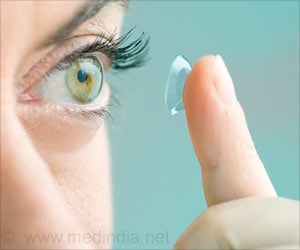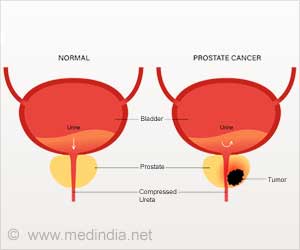Researchers measure and compare the light focusing characteristics of different lenses used to slow myopia (nearsightedness) progression, which could prevent visual decline.

‘Lenses that modify retinal signals will pave the way to more effective treatments in myopia (nearsightedness).’





Nearsightedness is on the rise around the globe, especially among children. If current trends continue, half of the world’s population will be near-sighted by 2050, according to a report from the Brien Holden Vision Institute in Australia.Although the drivers of this worrisome trend are not entirely clear, specialized eyeglass lenses have been shown to keep myopia from getting worse. This is particularly important for children and teens who often experience progression in the condition as their bodies grow.
Recreating Properties of Myopic Eye to Test Lenses that Prevent Visual Decline
In the journal Optica, researchers describe their new instruments, and also report results from measuring the light focusing characteristics of different lenses used to slow myopia progression.Insights into the link between the optical properties of myopia progression management lenses and effectiveness in real-world scenarios will pave the way to more effective treatments. This could help millions of children and is fundamental in understanding the mechanisms by which these lenses work.
Myopia is typically caused when a person’s eyes become slightly elongated. This leads faraway objects to appear blurry because they are focused in front of, rather than onto, the retina (2✔ ✔Trusted Source
Global Prevalence of Myopia and High Myopia and Temporal Trends from 2000 through 2050
Go to source).
Although traditional eyeglass lenses can correct this blurriness, conventional lenses do not prevent myopia from getting worse. Myopia progression can increase the likelihood of other eye problems and irreversible blindness (1✔ ✔Trusted Source
Advances and challenges of soft contact lens design for myopia control
Go to source).
Advertisement
These lenses incorporate different types of structures, such as microlenses or microdiffusers, to manipulate the image properties at the peripheral retina while correcting the central vision. However, the optical properties of this relatively new technology have not been extensively studied and compared.
Designing Special Spectacle Lenses for Myopia Progression Management
In the new work, the researchers wanted to thoroughly characterize the currently available lenses under real-world viewing conditions. Therefore, they developed a new instrument that can measure the lens’s optical response to different angles of illumination while reproducing the myopic eye’s pupil and refractive errors.Advertisement
The SLM is the core of the instrument since it reproduces the refractive errors and pupil shape of myopic eyes. This allowed the researchers to reproduce, for the first time, real aberrations produced by different angles of illumination for different myopic eyes while testing the lenses.
Researchers also quantified the lenses’ light scattering properties, based on contrast reduction by adding scattering. For this, they designed a custom setup that does not require the specialized detectors and moving parts conventionally required for scattering quantification.
By combining the through-focus results with light-scattering measurements, we were able to accurately characterize several types of eyeglass lenses. Then compared measurements for each lens with their reported clinical efficacy for slowing myopia progression (3✔ ✔Trusted Source
In-depth optical characterization of spectacle lenses for myopia progression management
Go to source).
The results raised new questions that need to be studied further while also pointing to potential strategies that could increase the efficacy of future designs.
In this work, the lenses were characterized using a single wavelength of light to simplify the analysis of the image properties. Because the illumination in real scenarios contains many wavelengths, the researchers are working to adapt the instrument to include sources with varying wavelengths.
References:
- Advances and challenges of soft contact lens design for myopia control - (https://opg.optica.org/ao/abstract.cfm?uri=ao-58-7-1639)
- Global Prevalence of Myopia and High Myopia and Temporal Trends from 2000 through 2050 - (https://www.aaojournal.org/article/S0161-6420(16)00025-7/fulltext)
- In-depth optical characterization of spectacle lenses for myopia progression management - (https://opg.optica.org/optica/fulltext.cfm?uri=optica-10-5-594&id=530569)
Source-Eurekalert









